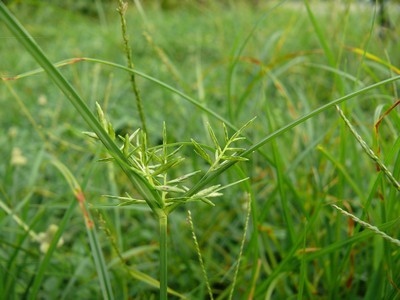
Common Name: Musta, Mustaka, Nagarmotha
English Name: Nut Grass
Botanical Name: Cyperus rotundus Linn.
Family: Cyperaceae
Description: A perennial, stolaniferous, rhizomatus, halophytic sedge. Rhizome many, slender; Tuber-white, succulent when young, hard and black when mature; stem-leafy at base arising from a tuber. Culm-dark green, glabrous. Leaf dark green above, with reddish brown sheaths, clustered at the base of stem. Inflorescence 3-9 spreading rays bearing tassels of few, large spikelets; spikelet 20-40 flowered, red brown to almost black.
Chemical Constituents: The major chemical components of this herb are essential oils, flavonoids, terpenoids, sesquiterpenes, cyprotene, cyperene, aselinene, rotundene, valencene, cyperol, gurjunene, trans-calamenene, cadalene, cyperotundone, mustakone, isocyperol, acyperone.
Properties: C. rotundus rhizomes are considered astringent, diaphoretic, diuretic, analgesic, antispasmodic, aromatic, carminative, antitussive, emmenagogue, litholytic, sedative, stimulant, stomachic, vermifuge, tonic and antibacterial.It is a good remedy for indigestion and kidney stones.
Used in the following MATXIN products: